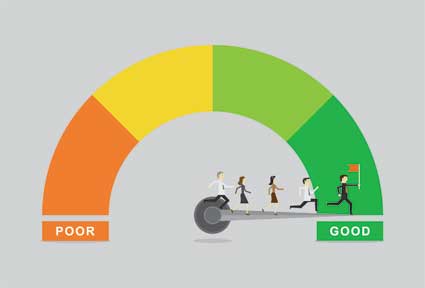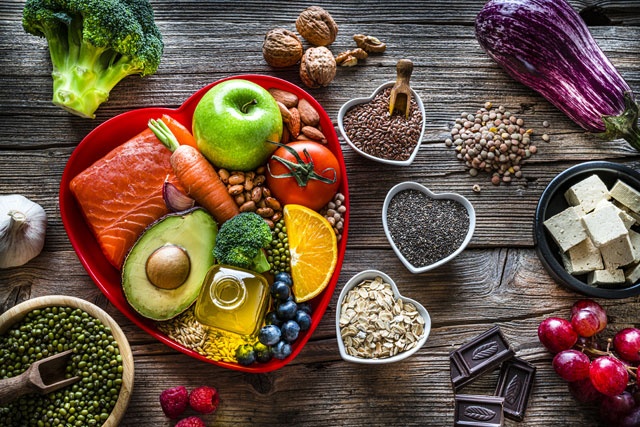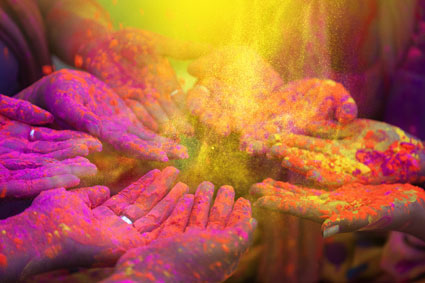Before you Start Decorating Tips
Remember cake decorating, like most things, operates on a step-by-step basis. Remember also, you can create something beautiful if you just take your time. Here are a few simple tips; suggestions and guidelines to help you get started.
1. Perhaps you have applied a beautiful and flawless border. Just when you are about to put on the final steps, you accidentally smear the border. To prevent this from happening, apply your cake decorations before you do your border. This will prevent any unfortunate mishaps.
2. As a cake decorator, you may choose from many different types of pastry bags. You can use a plastic reusable bag, a disposable bag, parchment triangles, plastic cones or paper cones. Practice using different kinds of bags before you start decorating, and select one you are comfortable with. We will learn more about piping bags later.
3. Many would-be cake decorators believe they have to make their own icing or use a special recipe. The truth is that you can use grocery store frosting to ice most of your cake. This frosting will generally not work for decorating cakes because it is too thick. Wilton Company manufactures tubes of icing ready to be connected to couplers and metal tips. For the beginner, it is not altogether a bad idea to start off with ready made icing, since it is easy to work with.
4. Using a stencil is a quick and easy way to decorate your cake. You can purchase cake stencils at your local crafts store or kitchen supply store. Make sure to buy a stencil that will not absorb grease and can be reused.
5. Filling a disposable bag or a featherweight can be tricky. Place it in a glass, point end facing down. Fold down the sides of the bag into a cuff. Fill it halfway with icing. If you fill it with more you risk an icing leak from the top of the bag. Fold the cuff up and twist it closed. Wrap a twist-tie around the top of the bag to prevent leakage.
Prepping Your Cake for Filling, Icing and Decorations
Prepping your cake is necessary to assure success with filling and frosting. If your cake is being made from scratch, it should cool after baking for at least an hour before frosting or glazing. This helps to prevent crumbs or breakage and makes for easier frosting. If the cake is still warm when you frost, the icing will drip off the cake or separate. If time permits, chill the cake (do not freeze) after cooling, between each filling and before frosting.
The hardest part when applying frosting is preventing creating crumbs or craters in the cake. When applying frosting, complete the stroke without lifting the spatula from the cake.
If you aren't going to decorate your cake within a day or so, you can freeze it after cooling. Simply wrap in plastic wrap, place in an airtight bag and freeze. If your plastic wrap has too much air, the cake will dry out. Place it in a safe spot in the freezer where it won't be bumped or contaminated with odors. You can freeze undecorated cake layers for up to a month. Freezing tightens the cake's texture, making it easier to frost and less crumbs.
When you are ready to frost, thaw your unfrosted cake layers in their wrappers. This way condensation will form on the wrappers and not the cake. When cake layers are at room temperatures, you may unwrap them. Twelve hours or overnight is par, however, a 16 inch, two layer wedding cake may need thawing up to two days.
Once your cake has cooled, or thawed, level (trim and tort) the layers. This means optionally cutting into multiple horizontal layers. Most cake tiers are two baked cakes of the same size, each cut in half horizontally, four layers total (torting). The secret is making the layers even. This works exceptionally well when working with fondant icing as it provides more support for the heavy icing.
If a cake comes out of the oven obviously uneven, use a serrated knife to trim the top off and make it level. If it's only slightly uneven, you can compensate with additional filling. Why make a cake four layers when two is easier? A cake with thin layers alternating with icing makes a most interesting presentation when served.
A perfect cake is smooth, has a light, golden brown surface with few crumbs and a springy crust. If the top layer does not match perfectly when placed on the bottom layer you may be pushing too hard after placing the top layer onto the cake. Press it lightly in place, but not so hard as to flatten the bottom layer increasing its size.
design that is achievable and delicious looking. The cake can be frosted with buttercream or royal icing. The flowers contrast with the cake and are artistically positioned. If you do a practice run first, or a makeshift design, you'll have a better idea of where to place your flowers.
Many beginners practice with a box cake rather than use all fresh ingredients. Here is a practice icing you can use:
- 1 cup shortening
- l pound confectioner's sugar
- 2-3 tablespoons water
Master the simple cake decorating instructions on the back side of a pan or waxed paper before trying them on the cake. It's tempting to use every technique you know on the same cake, but selecting a few that are well-matched will give you better and less busy results.
Interested in learning more? Why not take an online Cake Decorating course?If you make a mistake, it can be hidden with a little creativity. When fixing a mistake will disturb other decorations, an extra flower or well-placed leaf can mask an imperfection. Note the surface of the above cake. Contrary to many decorators' advice, icing need not be perfectly smooth. A hint of ridges and valleys actually enhance a cake with buttercream frosting. Just be careful the icing surface does not interfere with setting flowers, leaves, etc.
If your cake is large, proportion your decorations accordingly. If your cake is smaller, use smaller piping/decorating tips and simple designs.
Here is a wonderful whipped frosting you can also tint for the filling and use on a vanilla, strawberry or chocolate cake.
Whipped Frosting Ingredients
- 3 large egg whites
- 3/4 cup sugar
- pinch of salt
- 1/3 cup water
- 1/4 teaspoon pure vanilla extract
Directions
1. In a heatproof bowl set over (not into) a saucepan of simmering water, combine three large egg whites, 3/4 cup of sugar, salt and 1/3 cup of water.
2. Cook over medium heat, stirring constantly, until sugar has dissolved, or mixture registers 150 degrees on a cooking thermometer (about 2-3- minutes).
3. Transfer to a large bowl
4. Use an electric mixer and beat on medium-high until glossy and stiff peaks form (do not overbeat).
5. Reduce speed to low, add ¼ teaspoon vanilla extract and beat until just combined. Use immediately.
As you become more confident, you may want to try different filling combinations for extra flavor and added texture. It adds an element of surprise when you cut into a cake with a surprise filling. Here are some favorite icing and filling combinations.
- Lemon butter cake, filled with lemon buttercream and fresh raspberries, finished in vanilla buttercream
- Lemon butter cake, filled with cream cheese icing and fresh raspberries, finished in vanilla buttercream
- Italian cream cake, filled with cream cheese icing, finished in vanilla buttercream
- Lemon poppy seed cake, filled with lemon curd and buttercream, finished in lemon buttercream
- Old fashioned chocolate layers, filled with chocolate fudge icing, finished in ganache
- Ginger spice cake, filled with lemon cured and cream cheese icing, finished in vanilla buttercream
- Vanilla butter cake, filled with sweetened whipped cream and fresh seasonal berries, finished in vanilla buttercream
- White chocolate raspberry cheesecake, finished in white chocolate buttercream
- Red velvet cake, filled with cream cheese icing, finished in vanilla buttercream
- Vanilla butter cake, filled with strawberry cream and a smear of strawberry preserves, finished in white chocolate buttercream
- Chocolate layers, filled with caramel buttercream, finished in white chocolate fondant
- Chocolate Kailua layers, filled with mocha buttercream and ganache, finished in dark chocolate ganache
Note: When working with perishable filling or icing, cake must be refrigerated after decorating.
When made with real butter, buttercream icing has the consistency of whipped butter and will melt in heat or humidity. This is a serious consideration if celebrations are held outdoors or in a facility not air-conditioned. Visualize red roses melting onto a white iced cake. Icing and decorations in any form should not look or taste like the school paste we used to eat out of the jar. Buttercream made with shortening and butter holds up better.
After you work with icings or glazes for awhile, you will make your own choices as to taste and consistency. Many professional cake decorators use the Wilton Perfect Buttercream Recipe. It isn't overly stiff or too thin, glides on the cake and doesn't run off. It keeps well and stays creamy for three or four days:
Buttercream Icing Ingredients
- 1/2 cup solid vegetable shortening (Crisco)
- 1/2 cup (1 stick) butter or margarine, softened
- 1 teaspoon vanilla extract
- 4 cups sifted confectioners' sugar (about a pound)
- 2 tablespoons milk
Makes about three cups of icing
Instructions (Medium Consistency)
1. In a large bowl, cream shortening and butter together with an electric mixer. Add vanilla.
2. Gradually add in the sugar, one cup at a time, beating well on medium speed. Scrape bottom and sides of bowl often.
3. After all the sugar has been mixed in, the icing will appear dry. Add milk and beat at medium speed until light and fluffy.
4. Keep the bowl covered with a damp cloth until ready to use.
5. The icing can be stored two weeks in the refrigerator in an airtight container. Rewhip before using.
For thin spreading consistency icing, add two tablespoons light corn syrup, water or milk. For pure white stiff consistency icing, omit butter. Substitute an additional ½ cup shortening and add 1/2 teaspoon no-color butter flavor. Add up to four tablespoons light corn syrup, water or milk to thin.
Note: Wilton has changed their traditional recipes replacing Hydrogenated Shortening with Trans Fat Free Shortening.
Coloring the Icing
When coloring the icing, its best to use restraint. Gel colors are much more subtle than paste colors and are very forgiving. Mix the colors a few shades lighter then you want as the shade will darken as it sets. Like paint, always mix more than you need - colors are hard to duplicate.
Take a look at the Rubik's Cube cake. There is black, bright green, blue and red, all rich, dark colors that may stain the mouth and teeth. Imagine watching this happen as people eat your masterpiece. Sadly, there you are, the cake diva, sobbing in the bathroom.
Try working with fat free shortening and striving for taste and icing consistency. Learn the easiest methods of cake decorating that work for you. Cake decorating is more than a sprinkling of powdered sugar.
-
FUN CAKE RECIPE: (easy and good if you need a cake fast)
-
INFALLIBLE CHOCOLATE CAKEIngredients:1 cup sour cream1/3 cup vegetable oil1/3 cup water4 eggsI package (18.25 oz) chocolate cake mix1 box instant chocolate pudding mix (3 oz.)1 package (12 oz.) chocolate chipspowdered sugar (optional)Heat oven to 350 degrees.In a large bowl, mix sour cream, oil, water, eggs, cake mix, and pudding mix. Stir in chocolate chips. Pour this batter into a well-greased 10-inch bundt pan. Bake 40-45 minutes or until a toothpick comes out clean. Remove from pan and sprinkle powdered sugar across the top. You could frost it as another idea.Serves 10-12.


























